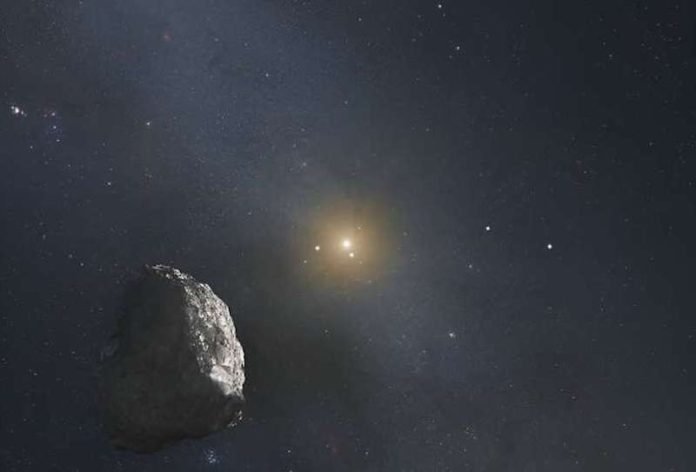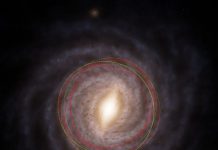
In a celestial twist, two theoretical physicists, Harsh Mathur and Katherine Brown, have proposed an idea that shakes our pursuit for a potential ninth planet in our solar system.
They suggest that mysterious movements of objects in the far reaches of our solar system, once thought to hint at a hidden planet, might actually be explained by a modified understanding of gravity, a theory known as Modified Newtonian Dynamics (MOND).
A New Lens on Old Gravity
Traditionally, scientists have relied on Isaac Newton’s law of gravity to understand how objects in space interact.
This law has worked well for us so far, but it does have its limitations, especially when we look at very distant or very large cosmic structures, like galaxies.
That’s where MOND comes in. It proposes that when the gravitational pull between objects is very weak, gravity might work a bit differently than what Newton proposed.
Previously, MOND has been explored mainly to understand the rotations of galaxies without relying on the concept of “dark matter” – a kind of matter that we think exists (because of its gravitational effects) but that we can’t see or detect directly.
It was quite a surprise when Mathur commented, “MOND is really good at explaining galactic-scale observations, but I hadn’t expected that it would have noticeable effects on the outer solar system.”
When Galaxies Influence Planets: A MOND Perspective
Mathur and Brown dove into MOND theory with curiosity after anomalies were noticed in the orbits of some objects in the far-off areas of our solar system back in 2016.
These unusual movements of distant solar system objects were thought to hint at a hidden ninth planet, influencing them with its gravitational pull.
However, Mathur and Brown explored if MOND, which considers the gravitational influence of our Milky Way galaxy, might explain these odd orbital dances instead.
Surprisingly, when applying MOND to these distant objects, their predicted orbits lined up strikingly well with actual observations.
Mathur noted, “the alignment was striking,” indicating that the galaxy’s gravitational influence could indeed be impacting these distant solar system objects, pulling their orbits into a particular alignment over millions of years.
Where to Next in the Cosmic Dance?
Of course, with space being as vast and mysterious as it is, Mathur and Brown do acknowledge that other explanations might still come to light, and that more data is needed to strengthen any assertions in this cosmic puzzle.
Some astronomers suggest that the odd orbits might even be due to observational biases.
Katherine Brown adds a note that whether MOND becomes accepted or refuted, the endeavors into these cosmic questions position our outer solar system as a potent field for testing our understandings of gravity and revealing deeper cosmic mysteries.
In this journey through the cosmic dance of planets and galaxies, researchers like Mathur and Brown navigate through the intricate waltz of celestial bodies and the hidden forces that guide them.
As we continue to gaze into the universe, our understanding of the fundamental forces like gravity continues to be challenged and refined, offering new cosmic perspectives and unfolding the boundless enigmas of our glittering skies.
The search for Planet Nine and the exploration of alternative gravitational theories both stand as testament to humanity’s unending quest to comprehend the vast, mysterious cosmos enveloping us.



